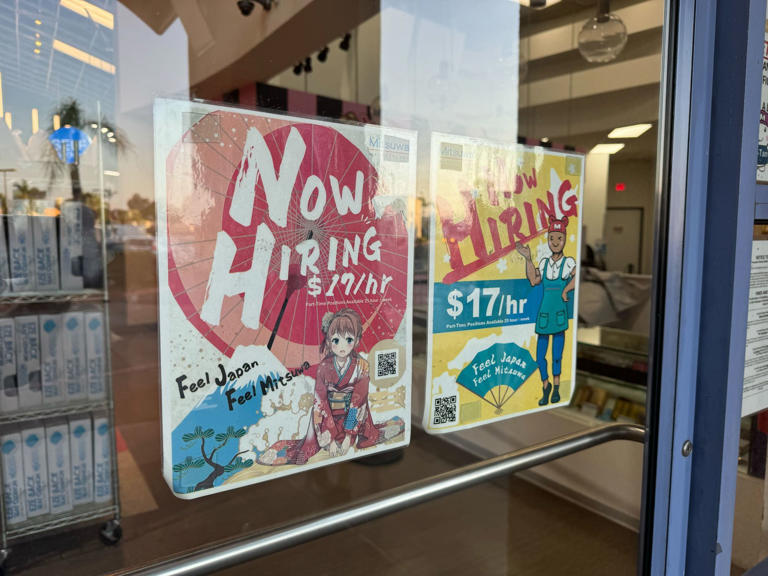San Diego’s unemployment rate increased for the second consecutive month in July, reaching 4.9%, up from a revised 4.5% in June, according to state labor officials. While this figure is higher than the national unemployment rate of 4.5%, it remains lower than California’s overall rate of 5.8%. The rise in the jobless rate is not entirely negative, as it can be largely attributed to seasonal factors and an increase in the labor force, signaling that more people are actively seeking employment.
Two key factors explain the higher jobless rate in San Diego County: teachers on summer break and a notable influx of workers entering the labor force. Between June and July, nearly 13,000 people joined the region’s workforce, bringing the total to 1.59 million. While this is slightly down from the 1.6 million workers at the same time last year, it marks a reversal of the declining labor pool seen throughout most of 2024.
This trend of more people rejoining the workforce is not unique to San Diego. Across the U.S., the labor force grew at a similar rate in July for various reasons. Many older workers who retired early during the pandemic are returning to the job market to improve their financial situations or simply to stay engaged. Additionally, younger individuals are entering the workforce for the first time, and families that had reduced to one income during the COVID-19 pandemic are now fully returning to work.
Phil Blair, executive officer of Manpower San Diego, noted a significant demographic shift in the labor market, with many mothers who stayed home during the pandemic now seeking employment. Rising living costs are also pushing many gig workers in San Diego to transition to full-time positions. “It’s possible for some people to work part-time at Starbucks,” Blair said, “but things are getting more expensive all the time. They need more hours.”
From June to July, San Diego County saw its largest job losses in the government sector, primarily in education, with 15,200 claims filed. These losses are typical for the summer and are expected to rebound quickly as the school year begins. The private education and health services sector also saw a decline, losing 600 jobs, while other sectors such as services (laundry, maintenance, religious) and information (broadcasting, telecommunications, newspapers) lost 300 and 100 jobs, respectively.
On the other hand, tourism continued to be a significant driver of job growth in the region, as expected during the summer months, which include major events like Comic-Con International and San Diego Pride. The tourism sector added 1,900 jobs, primarily in hotels, casinos, bars, and restaurants. Other sectors that saw job growth included professional and business services (legal, scientific, waste management, architectural) and financial activities (real estate, insurance, investments), both adding 700 jobs each. Construction added 400 jobs, and trade, transportation, and utilities (mainly retail) added 300 jobs.
While more people joining the workforce is generally positive for the economy, it can also indicate that individuals are struggling to make ends meet. The U.S. Bureau of Labor Statistics reported that the number of Americans holding two jobs rose to 8.4 million in July, up from 8 million a year ago.
Daniel Enemark, chief economist at the San Diego Regional Policy and Innovation Center, highlighted that while the growth in the labor force is positive for employers, the number of people who actually secured jobs increased by only 5,600, which is lower than expected. Historically, the summer tourism boom in San Diego typically results in a median gain of 8,000 workers. Adjusting for seasonal fluctuations, the unemployment rate would be closer to 4.7%, compared to the national average of 4.3% and California’s 5.2%.
“Is this cause for panic? Probably not,” Enemark said regarding the higher unemployment rate. He noted that early data suggests stronger job numbers in August and that the Federal Reserve is likely to begin decreasing interest rates in September, which could lead to lower unemployment rates.
On an annual basis, San Diego County added 13,800 jobs, with the most significant gains in private education and health services, which added 12,900 jobs. Other sectors that saw growth included government, which added 5,000 jobs; leisure and hospitality with 2,600 jobs; construction with 1,700 jobs; and services with 1,000 jobs.
However, the professional and business services sector, typically one of the highest-paying sectors, saw the most significant job losses, shedding 4,500 positions over the past year. The manufacturing sector also continued to decline, losing 3,700 jobs, while other sectors such as information, financial activities, and trade, transportation, and utilities also saw reductions in employment.
In comparison to other California counties, San Diego’s unadjusted unemployment rate of 4.9% placed it in the middle of the pack. Los Angeles County had a higher rate of 6.5%, while San Francisco County had a lower rate of 3.9%. Other counties such as Orange, Santa Clara, Santa Cruz, and Riverside had rates ranging from 3.9% to 5.9%.
As San Diego navigates these labor market fluctuations, the region’s job outlook remains a mix of challenges and opportunities.
